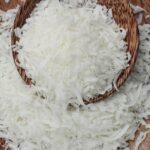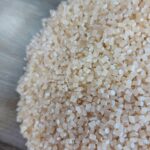CASHEW NUT SHELL OIL

In the pharmaceutical industry, tablet coating is a critical process that impacts not only the aesthetics and stability of the final product but also its efficacy and patient compliance. Modified tapioca starch, a versatile excipient, has emerged as a key player in this field, offering unique benefits that traditional coating materials might not provide. Here are five essential applications of modified tapioca starch in tablet coating that are revolutionizing drug formulation:
Enhanced Film Formation: Modified tapioca starch provides superior film-forming properties, creating a smooth and uniform coating on tablets. This uniformity is crucial for ensuring consistent drug release profiles, which is vital for maintaining the therapeutic efficacy of the medication. Unlike other coating materials, modified tapioca starch can achieve this uniformity without the need for complex processing techniques, reducing manufacturing costs and time. Additionally, the ability of tapioca starch to form a robust film helps protect the active pharmaceutical ingredient (API) from external environmental factors such as light, air, and humidity, thereby preserving the drug’s potency over time.
Improved Stability and Shelf Life: The stability of a drug is a major concern in the pharmaceutical industry, particularly for hygroscopic drugs that are sensitive to moisture. The use of modified tapioca starch in tablet coating addresses this issue effectively by acting as a moisture barrier. This barrier prevents the ingress of water vapor into the tablet core, which can cause degradation of the API. Furthermore, modified tapioca starch can be engineered to provide different levels of moisture protection, allowing for customized solutions based on the specific needs of the drug formulation. By improving the stability of the drug, modified tapioca starch helps to extend the product’s shelf life, ensuring that patients receive medication that is both safe and effective even after prolonged storage.
Taste Masking: One of the critical challenges in oral drug administration is taste masking, particularly for drugs with bitter or unpleasant flavors. This is especially important in formulations intended for pediatric and geriatric patients, who may refuse to take medications that taste bad. Modified tapioca starch can be used in coating formulations to effectively mask the unpleasant taste of certain APIs. The taste-masking capability of tapioca starch is achieved by creating a barrier between the taste buds and the API, preventing the bitter compounds from being released in the mouth. Additionally, this application not only enhances patient compliance but also allows for the development of orally disintegrating tablets (ODTs) that can dissolve quickly in the mouth without leaving a bad taste, making the medication experience more pleasant for the patient.
Controlled Release: Controlled release formulations are designed to release the active ingredient of a drug at a specific rate, location, and duration within the gastrointestinal tract. This is particularly important for drugs that require sustained therapeutic levels over an extended period or for drugs that need to be released at a specific site within the digestive system. By adjusting the modification process, tapioca starch can be tailored to create coatings that control the release rate of the drug. This capability is essential for developing sustained-release or delayed-release formulations, which can improve the efficacy of the drug and reduce the frequency of dosing. Moreover, the use of modified tapioca starch in controlled-release coatings can help minimize side effects associated with peak plasma levels, providing a more consistent therapeutic effect.
Enhanced Aesthetic Appeal: Beyond functionality, the visual appeal of tablets plays a significant role in patient adherence and brand recognition. Modified tapioca starch contributes to the aesthetic quality of tablets by providing coatings with a glossy finish and vibrant colors. The ability to produce visually appealing tablets is crucial for differentiating products in a competitive market. Moreover, the aesthetic properties of modified tapioca starch coatings are not merely superficial; they can also indicate quality and care in the manufacturing process, which can enhance consumer trust and brand loyalty. In addition, tapioca starch coatings can be designed to accommodate various printing techniques, allowing for the inclusion of logos, dosage information, or other branding elements directly on the tablet surface.

In conclusion, the use of modified tapioca starch in tablet coating represents a significant advancement in pharmaceutical technology. Its applications in enhancing film formation, improving drug stability, masking unpleasant tastes, enabling controlled release, and enhancing the aesthetic appeal of tablets make it an invaluable tool for drug developers. As the pharmaceutical industry continues to evolve, the role of modified tapioca starch is likely to expand, offering even more innovative solutions for the challenges faced in drug formulation and delivery.












